Base31 Quonset huts demolition discussed by built and cultural heritage committee
Administrator | Jul 03, 2025 | Comments 1
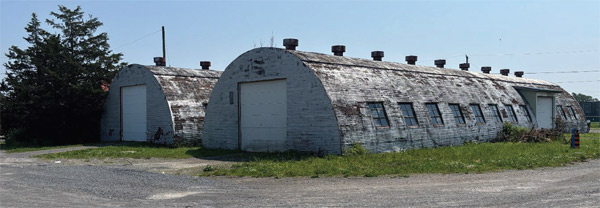
By Sharon Harrison
“Quonset huts are rare, they are structurally innovative of their time and they have tremendous historical associated value with military installations in Canada,” said Edwin Rowse, a heritage restoration architect, and County built and cultural heritage committee member.
This week’s committee meeting agenda included the notice of intent to demolish two Quonset huts located at Base31, which garnered some lengthy, interesting and conflicting discussion.
Vaughan-based PEC Community Partners Inc. (PECCPI), who operate Base31, have provided the County with a formal notice of their intention to demolish two listed buildings on the Base31 site (343 County Road 22, Picton), namely, Buildings 53 and 54, which are large Quonset huts. While both buildings are listed, it was noted they are not designated as heritage buildings.
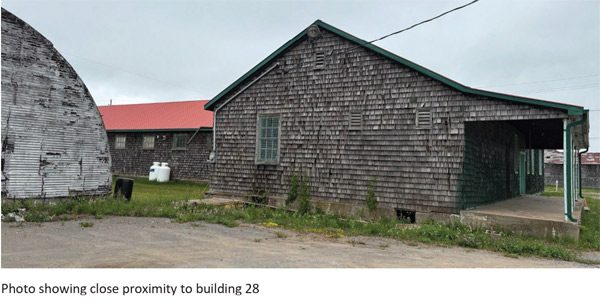
The purpose of the demolition is to construct an information centre and new home sales and leasing office at Building 28 (which is next to Buildings 53 and 54), their proximity impacting the planning of the future sales office location. Building 28 is to be renovated, where the plan is to include a small addition and new landscape work around the building.
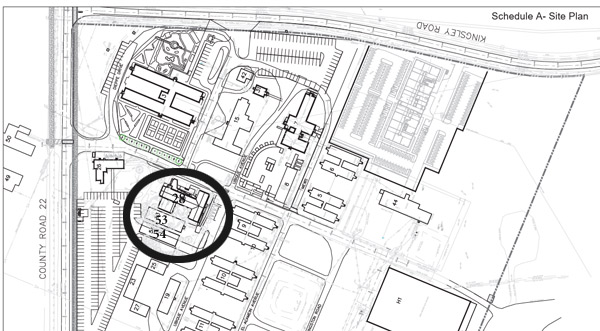 Both Quonset galvanized metal huts are understood to be constructed after the original base, in the 1950s, and both buildings show significant deterioration.
Both Quonset galvanized metal huts are understood to be constructed after the original base, in the 1950s, and both buildings show significant deterioration.
“PEC Community Partners Inc. has been the owner of the property since 2021, and has been working diligently to properly maintain, renovate and make safe the existing structures on site, while also working on an area concept plan to bring a wide variety of housing and resources to the community,” said PECCPIs Kathryn Randle.
“Many of the existing structures are in poor shape and contain numerous hazardous substances,” she stated. “Furthermore, the approved area concept plan has a revised road network that contemplates the removal of these two buildings.”
Randle outlined the rationale of why the buildings should not be designated under part four of the Ontario Heritage Act, stating the two Quonsets exhibit indicators of lack of historical maintenance and care.
“In order to better assess the current condition of the building, Gerrits Engineering Limited reviewed them [performed a visual structural condition assessment] and concluded the observed extent of deterioration and repair work required to restore structural integrity would be significant,” she added.
“The cost to remediate may exceed the cost of replacing the buildings. Renovation and repair would also require dealing with the substances identified in the designated substance report, adding significant costs.” (A brief outline of the assessment of Buildings 53 and 54, undertaken by Gerrits, is provided at the end of this article.)
Steve Willis, with Stantec Consulting, provided some context to the buildings in question, as well as the entire Base31 site generally, where he noted the whole site is a listed property, (considered to have cultural heritage value in the community) but not designated as heritage.
Willis further clarified that under the area concept plan for the re-development of the site (adopted by council through an official plan amendment last year), a cultural heritage assessment undertaken of the site identified contributing and non-contributing buildings.
It was noted that the majority of the buildings at Base31 were noted as being contributing, with only a relatively small number identified as non-contributing. The two Quonset huts in question are considered non-contributing, where Willis said in the plan for re-development the two buildings were not identified as buildings to be saved.
He said as part of the sub-division approval process, a Memorandum of Understanding (MOU) is currently being worked on between Base31 and the municipality (expected by the fall) regarding an agreement of the caretaking of the retained buildings.
The MOUs intent is to identify notification of the process if buildings are to be adaptive re-use or demolition, and what the process would be in either case, including the process for architectural review, explained Willis.
“Basically, we are trying to ensure that there is a program for ensuring that thoughtful decisions are being made about retaining the heritage character of the buildings, if there are any adaptations that come forward,” he explained. “And because the buildings are not designated, we can’t go with one process as you would normally do with a designated building, but we are ensuring that there is absolutely a scrutiny on the process.”
Committee member Bob Waldon asked about the decision to use an MOU as opposed to site plan approval, or conditions of approval, in the sub-division agreement.
Willis said, where there are site plans (for example, in the apartment buildings), those are stand-alone applications and they do have conditions, and they could include, if it affected a heritage listed building, they could use a site plan approval.
“The MOU is really meant to deal with these situations (like with Buildings 53 and 54), where there is no clear process, and we wanted to lay out what happens if there is an adaptation alteration, so it doesn’t take away from the opportunity for the County to put additional conditions where planning applications are there.”
Rowse said he was alarmed about the discussion about the Quonset huts in Base 31s notice of intent, describing it as “so wholesale dismissive of any sort of significance they might have”.
“I found that a little lacking in heritage perspective,” he added.
Willis noted that Base31 is not a heritage district, and identifying buildings as contributing and non-contributing is a normal way of characterizing districts. He further explained that the two buildings are non-contributing because they were built later than the rest (in the 1950s), and weren’t part of the original formation of the base.
“We, as a committee, are also professionals, also understand about these issues – I am a heritage professional, 40 years experience – I don’t take those things just as face value, where is that 1950s date described?” asked Rowse. If they were from the1950s, they are still representative of very typical military installations, he added.
“Currently, we do not fix things by a restoration date, but by a contribution over time,” expressed Rowse. “And so, the whole question of whether we are even questioning the evaluation, not necessarily of contributing or non-contributing, but of their own value and how is this going to be commemorated or otherwise documented – there is no mention about this, they just want to demolish, right?”
Willis responded by saying, when buildings are not designated and are only listed, the County does not have regulatory authority.
“But we are trying in good faith with the applicant, based upon the heritage evaluation that was done last year, to negotiate a process with them,” confirmed Willis.
“Quonset huts are rare, they are structurally innovative of their time, they have tremendous historical associated value with military installations in Canada. Is there not a place for a small commemoration of all this?” Rowse asked.
Randle said they are looking at the site holistically.
“We have put up a new Quonset hut recently as we do recognize the value of that built form and the character that it did play for the era of the site,” said Randle. “These two Quosnet huts in particular are structurally not sound; they have a whole bunch of contaminated substances on them that we are going to have to deal with.”
“These two buildings in their current state, we do not feel is appropriate to restore, but we definitely appreciate the value. Right now, are just talking about a small fraction of the site, which is definitely important, but in our larger vision, it’s something to consider because the plan right now just for this localized area, the state of the buildings, their condition structurally and environmentally, is of great concern to us.”
Randle said the buildings proposed to be demolished were not part of the original military base construction and do not have historical association, nor are of significance to the community.
“In our opinion, the buildings do not exhibit design value, physical value, historical value or contextual value,” stated Randle. “The buildings, being Quonset huts, are not rare, do not display high craftsmanship or technical achievement. These buildings are not out of the ordinary, nor are they hard to come by.”
Rowse asked whether a small component of one of the buildings could be saved as a commemorative effort.
“Say they’ve got seven or eight windows long, and if we kept three windows, and we moved one small part, cannibalized the others, to create materials for repair, could we have a commemoration which would involve a small remnant of at least one of the two huts?” suggested Rowse.
Chair of the built and cultural heritage committee, Sandy Latchford, reminded that this item was for discussion only and no decision would be made (as the committee does not have the authority to do so). Council will ultimately have to make a decision on the Notice of Intent to demolish received by PECCPI.
BUILDINGS 53 AND 54 ASSESSMENT FROM ON-SITE VISIT
At an on-site visit by Gerrits Engineering in June which included a walk-through, the site visit comprised a visual review of both buildings in order to assess the condition, provide recommendations to reparability. No testing or further structural analysis or building code review was conducted.
Gerrits examined the interior and exterior to assess the overall structural condition of various framing elements of the building. Below is an outline summary of their conclusions.
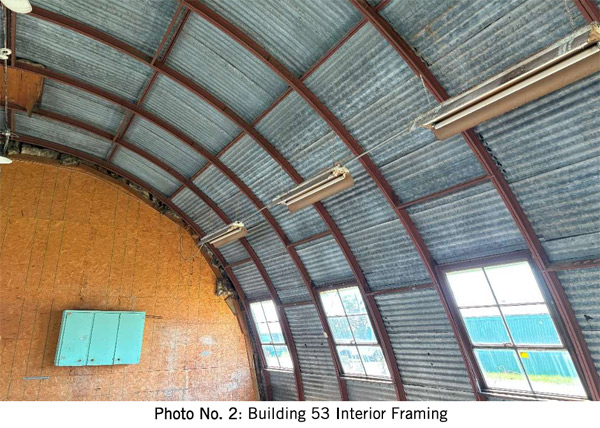 Building 53 Assessment
Building 53 Assessment
Building 53 (Quonset hut) covers an approximate area of 3,272-square-feet
It was noted that the walls and roof form a semi-circular shape constructed with multiple corrugated metal sheets, with the exterior of the metal sheet covered in a white insulation layer around the entire semi-circular structure. The corrugated metal sheets are supported on the interior with back-to-back semi-circular vertical channel ribs and horizontal purlins.
“It was noted that some of the back-to-back channel ribs were not properly anchored to the concrete base, and some of these anchors from the channel base plate had no concrete below the base plates, and some of these channel base plates were not in full contact with the concrete surface,” noted Gerrits structural report.
It was further noted that due to wear and tear on the exterior insulating layer, moisture would be able to easily slip behind this layer and come into contact with the corrugated metal sheets.
“Pitting corrosion was also observed in many spots along the corrugated metal sheets, and, as a result, lead to water penetrating the building interior.”
Further, some of the corrugated metal panels were observed to have buckled, with visible gaps. There were also corroded screws and rust stains. There is also visible damage to the interior floor slab, with cracks along with some organic plant growth.
“Due to movement in certain sections of the floor slab, the floor was not level throughout the entire building footprint and could present itself as a tripping hazard.”
Corrosion was observed in many areas of the building’s interior steel framing and exterior corrugated metal panels, notes the report.
“A detailed inspection by a CSA certified structural steel inspection company would be required to verify the full extent of the corrosion and to confirm the full scope of any repair work.”
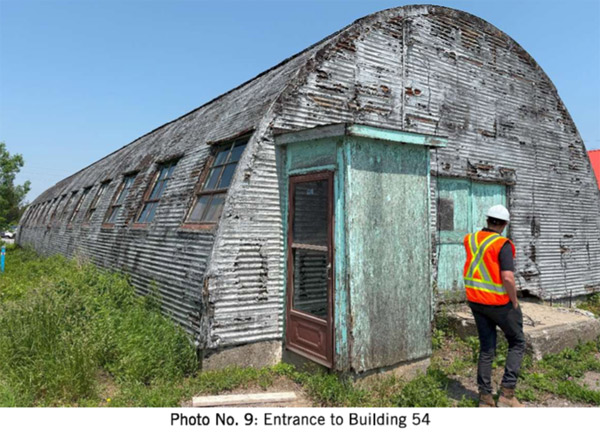 Building 54 Assessment
Building 54 Assessment
“Due to accessibility limitations at the time of the site review, only the exterior of Building 54 was assessed,” notes Gerrits structural report. It was noted that photos of the interior of Building 54 were provided after the site visit.
Given that Building 54 is similar in appearance and size to Building 53, “it can be inferred that the structure framing of this building would be similar to Building 53.
It was also noted that the exterior insulation had noticeable wear and tear which could lead to pitting corrosion of the corrugated metal panels. The exterior foundation along the length had large cracks on the exterior wall face, and large enough for water to penetrate.
“It is assumed the deficiencies in Building 53 could be present in Building 54.”
“Based on our initial observations, it is our opinion that Building 53 is in an unsafe condition for continued occupancy without significant repairs. Building 54, while not visibly in an unsafe condition, will also require significant repairs,” notes the report.
For both buildings, Gerrits were unable to determine if the foundation walls were bearing on sound bedrock or had adequate frost and moisture protection.
“Given the observed extent of deterioration, the repair work required to restore structural integrity would be significant and difficult to quantify with precision at this stage. It is reasonable to expect that the cost of remediation may exceed the cost of these relatively simple structures.
As such, demolition of Buildings 53 and 54 could be considered a more practical and cost-effective solution.”
Filed Under: Featured Articles
About the Author:

































“Due to movement in certain sections of the floor slab, the floor was not level throughout the entire building footprint and could present itself as a tripping hazard.”
Yep. This argument holds significant weight in the debate about demolition. Shaking my head as to why it was even included. But, the decision has already been made. Assumptions and premature conclusions based on incomplete inspections, and finalized with an opinion, spell the doom of the two Quonset huts in question. Fortunately, the previous owners of this site invested in maintenance and replacement roofs for the majority of the barracks, and the Sergeant’s Mess, (which far exceeded the cost of the original roofing materials), because of their pride of the property, and concern for its continuance.
“It is assumed the deficiencies in Building 53 could be present in Building 54.”
The bottom line: either one has the will to safeguard a heritage property, or not. Debating about age, or amount of repair, are distractions from the real debate. Are these Quonset huts integral to the heritage fabric of the former Camp Picton, or are they just in the way of development? What is next?